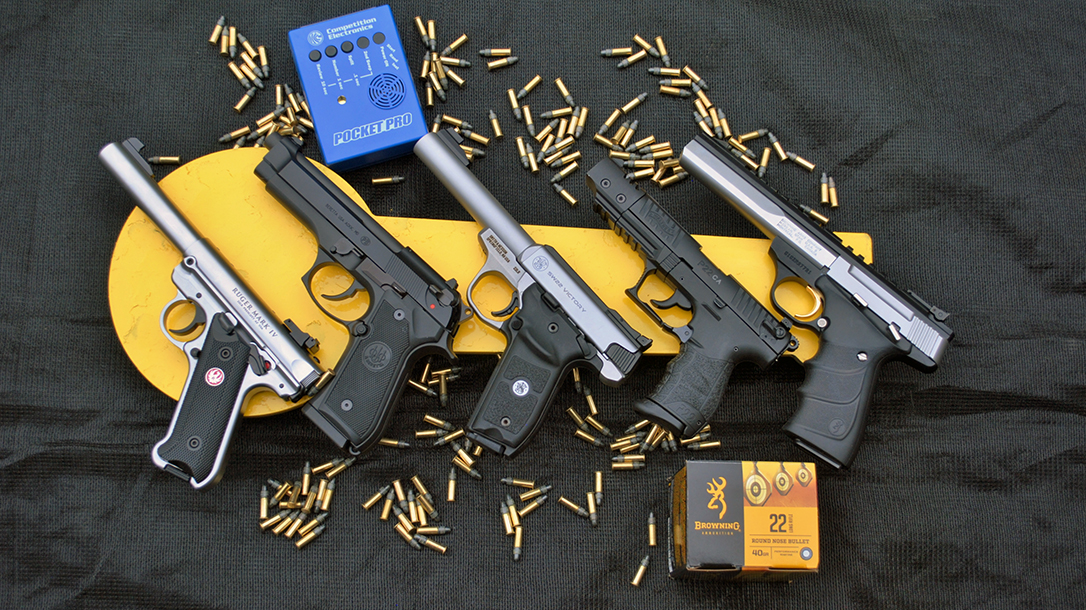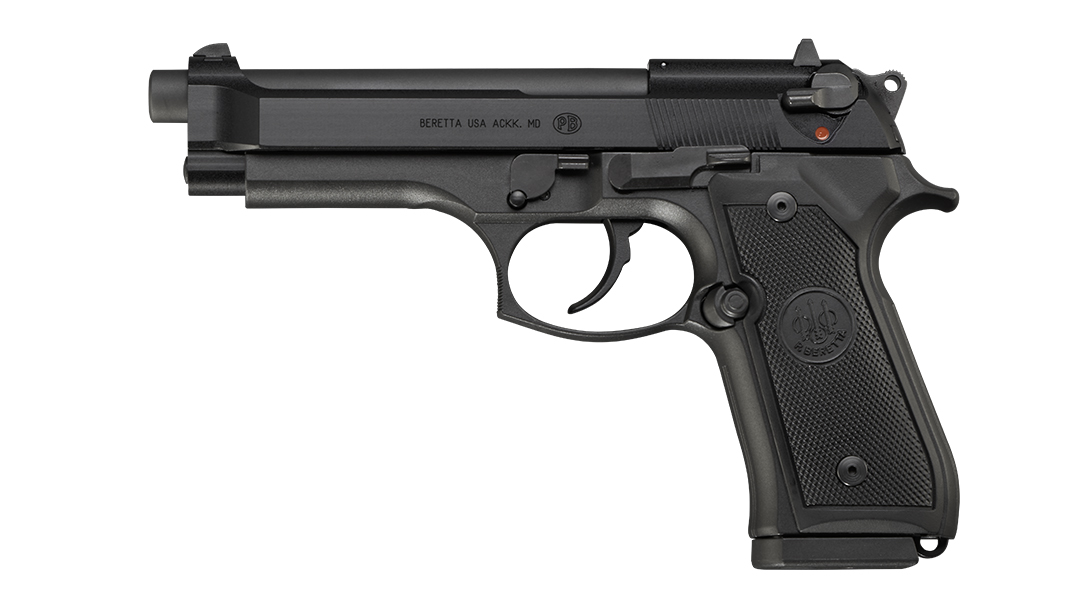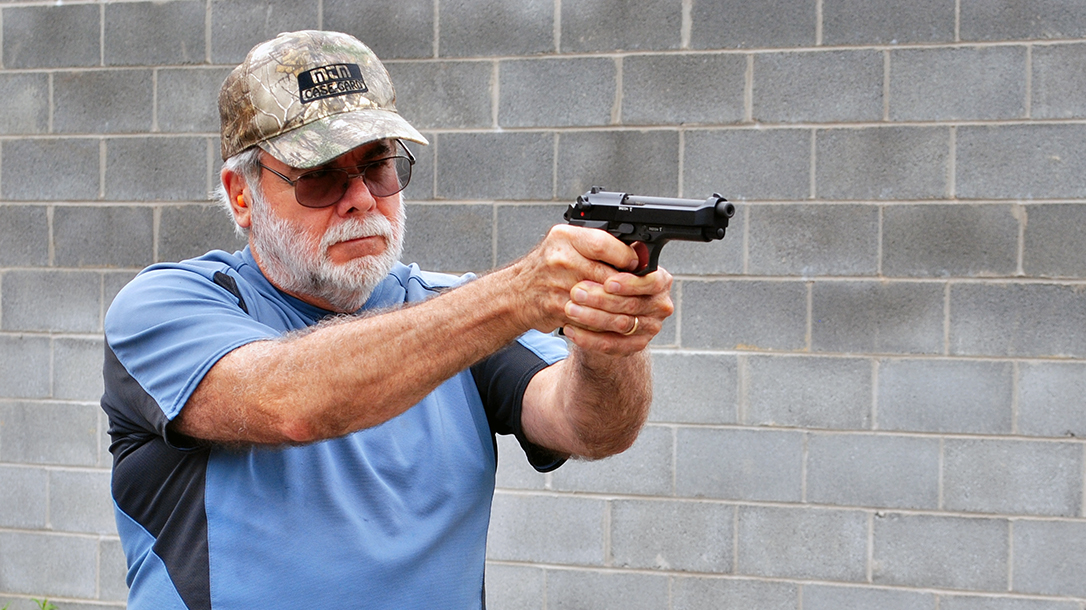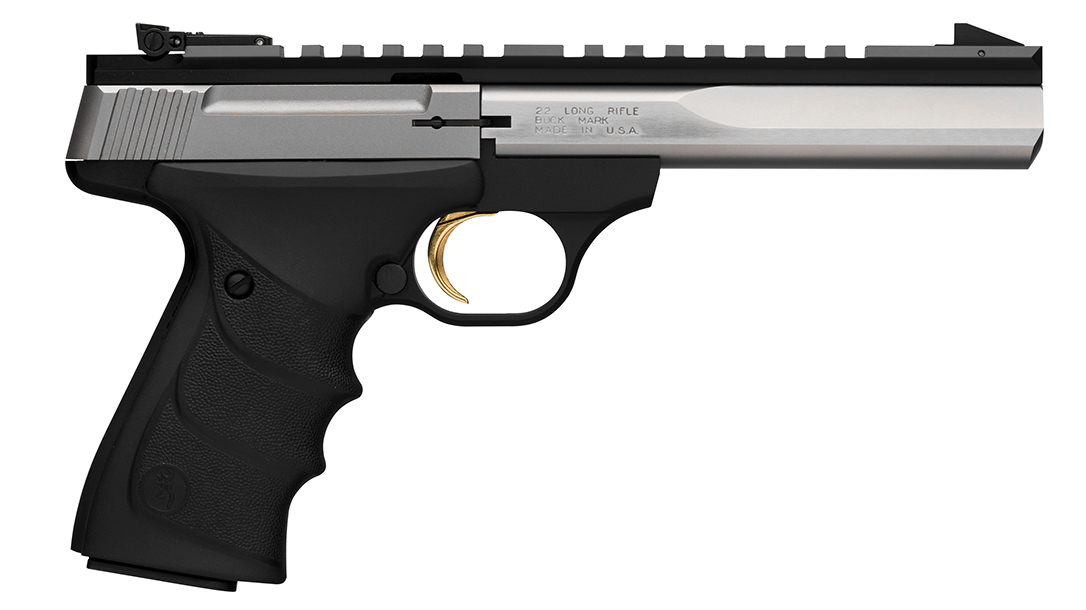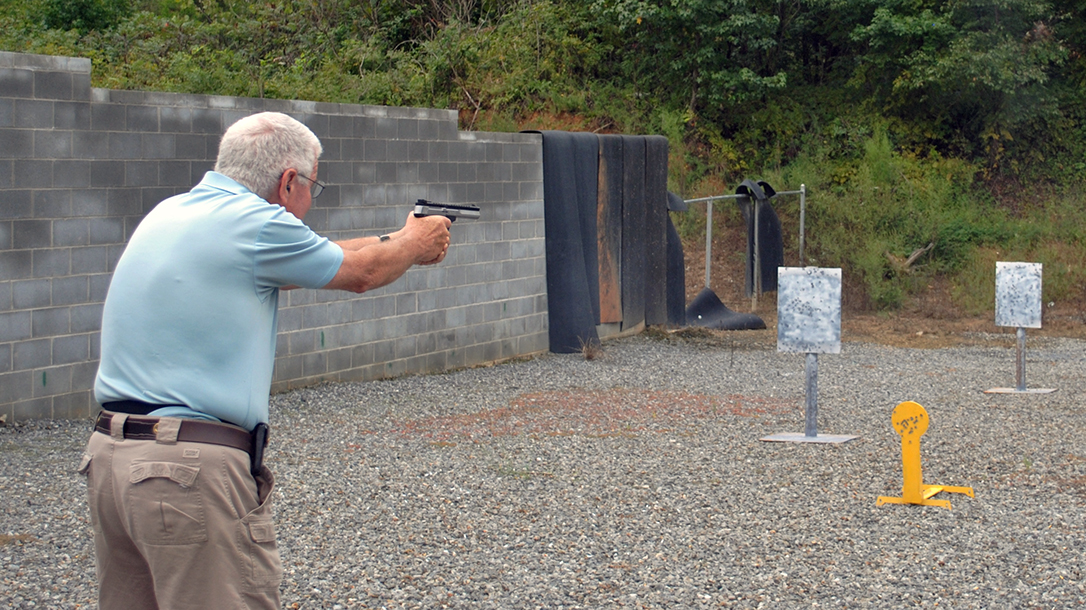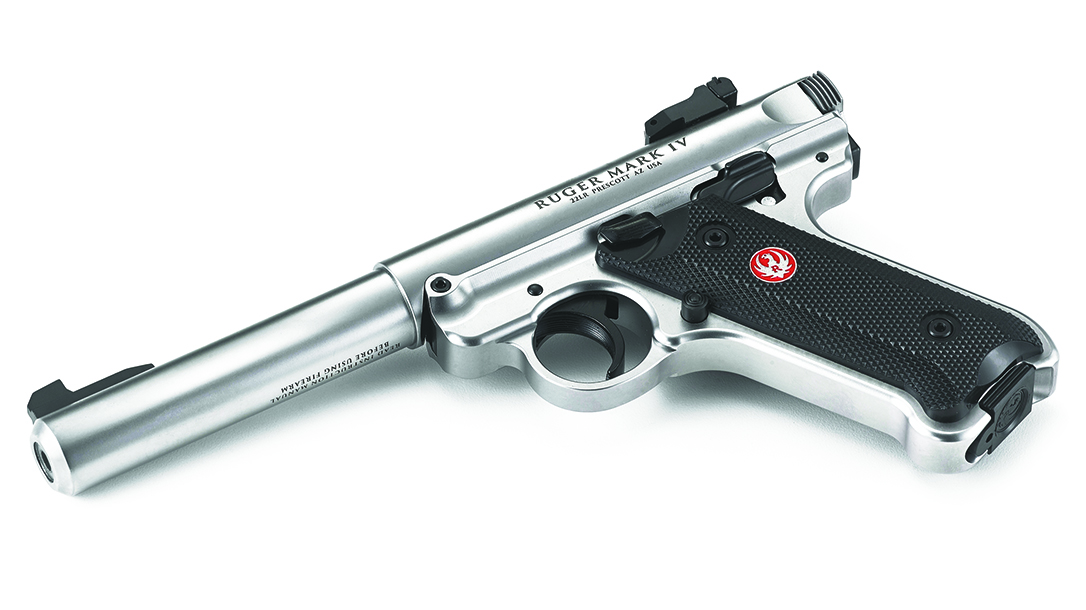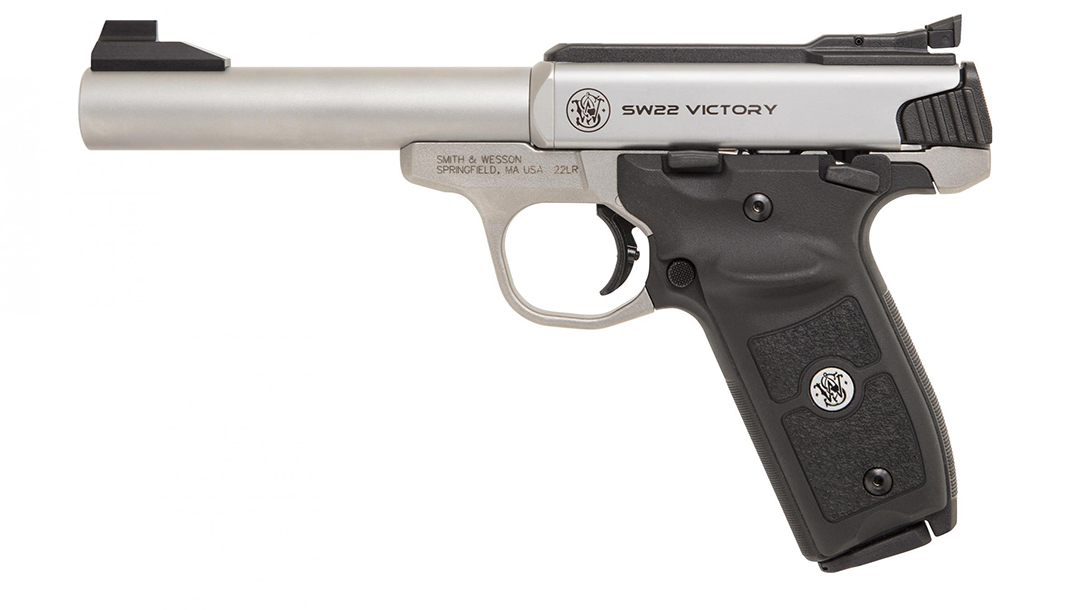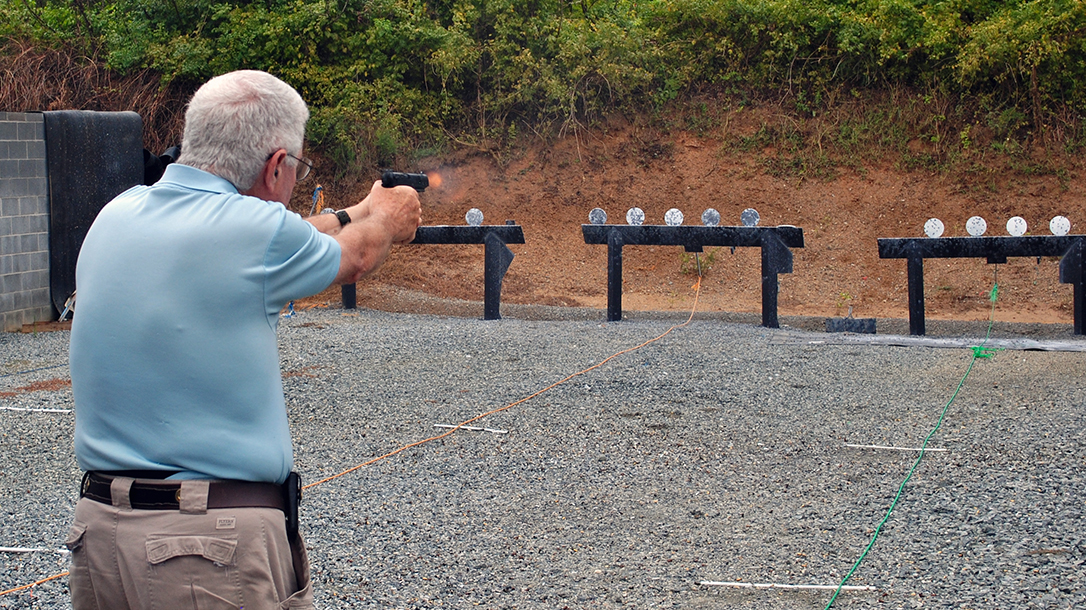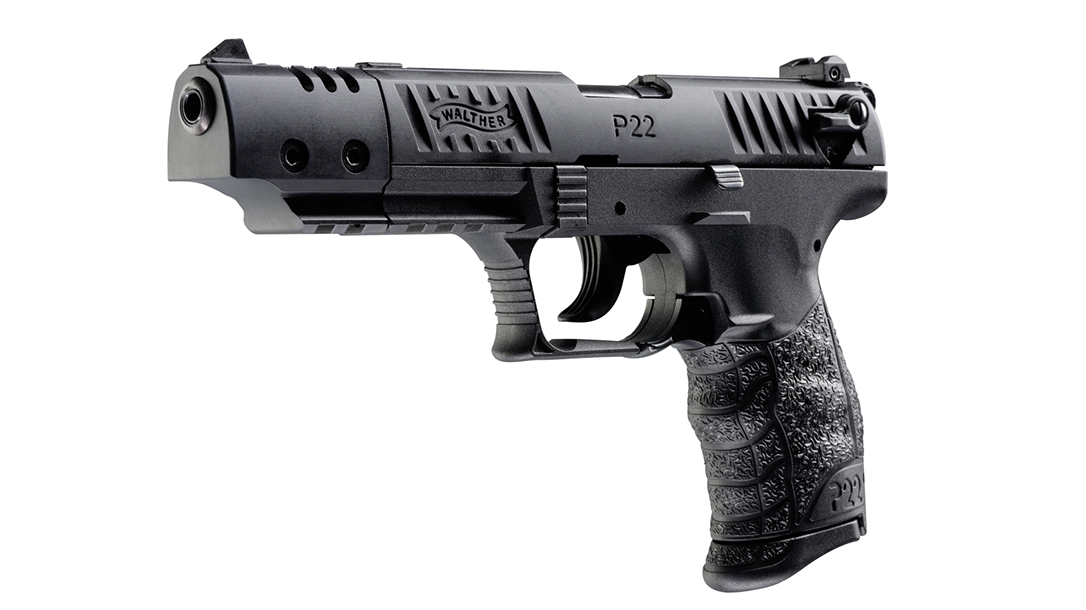The .22 Long Rifle is without a doubt the most popular metallic cartridge in the world today. And I’m not just talking about rimfire cartridges. More .22 LRs are manufactured, sold and fired annually than all other non-military cartridges — rifle, handgun and shotgun — combined. However, the reasons for its popularity are easy to understand.
First of all, .22 LR ammo is inexpensive. When I was a boy, I remember going to the local hardware store with my brothers where we each forked over a quarter and a dime for a box of fifty .22s. This expenditure of part of our hard-earned allowances enabled us to enjoy an afternoon of plinking with our single-shot rifles. While .22s now cost more than they did back then (like everything else), most shooters can still afford them without endangering their family finances.
Advertisement — Continue Reading Below
King Of The Rimfires
From a shooter’s standpoint, one of the .22’s biggest advantages is that it doesn’t make a lot of noise. This means the .22 LR can be fired in areas where letting go a .45 ACP pistol might result in irate neighbors calling the local police. This also makes them especially practical for indoor shooting ranges.
These firearms also produce almost zero recoil, making them perfect for teaching new shooters, and enabling experienced shooters to practice more often. With match-grade ammunition, a .22 LR firearm is capable of extraordinary accuracy. Also, it’s no fluke that some of the most accurate competition rifles and pistols are chambered for this caliber. And we can’t forget hunters, who also know that the .22 LR is powerful enough for taking rabbits, squirrels and vermin like prairie dogs and foxes.
As in most areas of today’s handgun market, semi-auto .22s have overtaken revolvers in terms of sales and popularity because of their higher capacity, faster reloading and slimmer profiles. So, for this issue’s “Battle Royale,” we decided to test some of the best medium-priced .22s out there that would work well for competition, hunting, trail protection and good ol’ plinking: The Beretta M9 22LR, Browning Buck Mark Contour Stainless URX, Ruger Mark IV Target, SW22 Victory Target and Walther P22 Target.
Advertisement — Continue Reading Below
The Contenders
As expected, this quintet of .22 LR pistols possessed a number of similarities while displaying some significant differences. Let’s get the most obvious similarities out of the way. First of all, thanks to the low operating pressures of the .22 LR, all five are blowback-operated pistols. Also, their magazines all hold 10 or more rounds of ammunition, and the sights are all black.
All five have manual thumb safeties. Additionally, those on the Beretta, Ruger and Walther are ambidextrous. Also, except for the Beretta, they all have magazine-disconnect safeties. The magazine releases run the gamut from push buttons mounted behind the trigger on the left side of the grip (Beretta, Browning, S&W and Ruger) to an ambidextrous paddle type under the triggerguard (Walther).
Standout Features
The Beretta M9 22LR stands out from the crowd because, while most of the test guns have a sporting/target-like appearance, it looks exactly like the Italian firm’s popular M9 — right down to its DA/SA trigger and 15-round magazine. Both sights are mounted in dovetail slots and can be adjusted for windage.
Advertisement — Continue Reading Below
The Ruger Mark IV Target’s alloy frame is of a new hinged style that does away with the rather difficult disassembly procedure of Ruger’s earlier .22 LR pistols but still retains the Luger-like ergonomics that so many admire. A detachable Picatinny rail is also included.
The Browning Buck Mark Contour Stainless URX also has a stainless steel barrel, an aluminum alloy frame, textured finger-groove grips and a full-length Picatinny rail for mounting optics.
The slide and frame on Smith & Wesson’s SW22 Victory Target are made from stainless steel. You’ll also find an interchangeable barrel system, thumb-rest polymer grip panels, a beveled magazine well and a detachable Picatinny rail.
Advertisement — Continue Reading Below
Walther’s P22 Target was the only test gun with a polymer frame. It also stands out with a muzzle-mounted weight/compensator, interchangeable backstraps and an ambidextrous, slide-mounted safety.
Rules Of The Range For the .22 LR Pistols
Before the real comparison started, I tested each pistol’s accuracy at 15 yards using an MTM Predator rest and Browning Performance Rimfire ammo. These rounds use 40-grain lead bullets with a black oxide coating for better reliability and accuracy. However, with a bit of help from yours truly, all five pistols showed that they were capable of producing sub-2-inch groups
Rimfire pistols are also known for being ammunition sensitive, and .22 LR rounds create a fair bit of fouling. So, my wife, Becky, and I figured we’d break the pistols in and spent the remainder of the afternoon plinking with them, running close to 100 rounds through each pistol to test its functioning. We experienced some malfunctions — mostly failures to eject and double-feeds — but after a good cleaning and lubing, these problems mostly disappeared.
Advertisement — Continue Reading Below
My good friends Dick Jones and Perry Windsor once again volunteered to help for the actual “Battle Royale” at the Piedmont Handgunners Association range on an overcast September morning. As in the past, the pistols would be judged in seven categories: reliability, ergonomics, trigger control, sights, grips, off-hand accuracy and reloading ease. Each category was scored from 1 (lowest) to 5 (best).
To accomplish this, shooters would run each pistol through two off-hand drills. Also, each drill would begin from the low-ready position with the pistol loaded with 10 rounds of ammunition. Thankfully, Brownells provided us with a Crabtree Tool & Die magazine loader.
Plate Rack Drill
This consisted of shooting racks of six 8-inch steel plates from 10, 15, 20 and 25 yards. Because a .22 LR round won’t knock down steel plates reliably, it was only necessary for the shooter to ring the steel to score. This drill was also run four times, and the score includes the total time for the four runs plus a five-second penalty for any miss.
Advertisement — Continue Reading Below
| Paul | Perry | Dick | |
| Beretta | 47.70 | 53.03 | 40.80 |
| Browning | 36.51 | 43.31 | 32.80 |
| Ruger | 37.35 | 52.57 | 35.61 |
| Smith & Wesson | 37.03 | 53.39 | 49.81 |
| Walther | 84.90 | 82.63 | 76.10 |
Steel Target/Popper Drill
The second drill had the shooter engaging four rectangular steel targets set in a V-shaped formation at 15 and 20 yards around a Birchwood Casey popper at 8 yards. We had to ring each of the four targets twice before engaging the popper. Again, the drill was run four times, with the score being the total time for the four runs plus a five-second penalty for any misses and a 10-second penalty for missing the stop plate.
| Paul | Perry | Dick | |
| Beretta | 20.50 | 26.79 | 22.88 |
| Browning | 17.22 | 23.10 | 18.93 |
| Ruger | 17.54 | 24.44 | 20.35 |
| Smith & Wesson | 23.70 | 26.90 | 16.22 |
| Walther | 47.06 | 36.44 | 44.06 |
Regardless of the distance, we were all able to hit the plates consistently. By the time we were finished, we had run almost 1,200 rounds of .22 LR ammo through the five pistols, and they had gotten pretty dirty. So, to ensure reliable functioning, after we finished the Plate Rack Drill, we cleaned and lubed the guns. Then, after we were done burning up all that rimfire ammo, we graded the pistols.
In-Depth Results For the .22 LR Pistols
Reliability
Early on, we experienced a few failures to eject with the S&W and double feeds with the Walther. But by the time we began shooting the Steel Target/Popper Drill, both pistols ran flawlessly.
Advertisement — Continue Reading Below
Ergonomics
This is a very relative call. One shooter felt the Ruger’s grip angle was too steep while the other two had the same complaint about the Browning. Also, there were complaints that the Ruger, Walther and S&W’s controls were difficult to operate while the Beretta’s were all in the “proper” places.
Trigger Control
The triggers on all of the pistols displayed varying degrees of “new gun” grittiness while the Walther’s stroke was the longest and heaviest. However, all three shooters felt the triggers should improve with use. Also, one felt the Browning’s trigger was too curved and pinched his finger.
Sights
We all felt that the Walther’s sights were a tad too low for fast acquisitions, while both it and the Beretta lost points because of their three-dot setup, which none of us care for.
Advertisement — Continue Reading Below
Grips
We all agreed that the tacky-feeling grips on the S&W and Browning, especially paired with the latter’s finger grooves, greatly improved handling and recoil control. However, the slick plastic grips on the Ruger and Beretta came in for some criticism, and the Walter’s short grip frame slightly hindered recoil control.
Off-Hand Accuracy
The S&W and Browning tied in this category with perfect scores. However, the Ruger nipped at their heels with 14. Despite its less-than-optimal sights, the Beretta earned a respectable 13 points. The Walther’s short grip, heavy trigger and low sights allowed it to finish with 9 points.
Reloading Ease
The Beretta’s magazine release was well positioned and easy to depress, earning it a perfect 15 points. However, we found that the Ruger, Browning and S&W were harder to reload. The thumb rest on the S&W’s grips also made it a bit difficult to reach the magazine release, and it was unanimous that the Walther’s paddle-type release was difficult to manipulate. Perhaps this was because it’s just so different from the pistols we’re used to shooting?
| Beretta | Browning | Ruger | Smith & Wesson | Walther | |
|---|---|---|---|---|---|
| Reliability | 15 | 15 | 15 | 12 | 12 |
| Ergonomics | 15 | 13 | 13 | 14 | 8 |
| Trigger Control | 13 | 13 | 12 | 14 | 9 |
| Recoil Control | 12 | 15 | 15 | 15 | 11 |
| Sights | 13 | 15 | 13 | 15 | 10 |
| Off-Hand Accuracy | 13 | 15 | 14 | 15 | 9 |
| Reloading Ease | 15 | 13 | 12 | 12 | 8 |
| TOTAL | 96 | 99 | 94 | 97 | 67 |
Note: A perfect score is 15 in each category for a total of 105 points.
Final Thoughts
After the dust settled, I asked my friends which guns they considered their favorites. Perry’s choice was the Browning. “It had excellent balance and felt like a ‘real’ pistol in my hands,” he said. “The sights were great, and it had a very nice trigger.”
Dick preferred the Beretta: “Despite not being a ‘target’ pistol like the others, I shot some of my best runs with it. It was 100-percent reliable; and it just felt familiar, more like the pistols I’m used to shooting than the others.”
My choice, though, was the S&W. I was impressed by its ergonomics, especially the grips. The sights were large and fast to acquire but still fine enough for precise shooting, and I felt it had the best trigger of the lot.
One thing we all agreed on: Shooting these .22 LR pistols was one heck of a lot of fun. As Perry succinctly put it, “This one was easy!”
